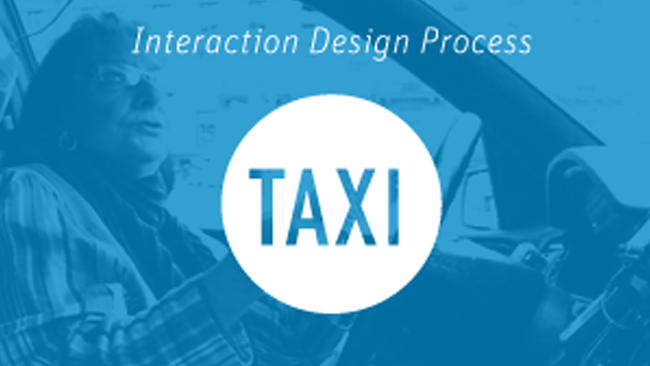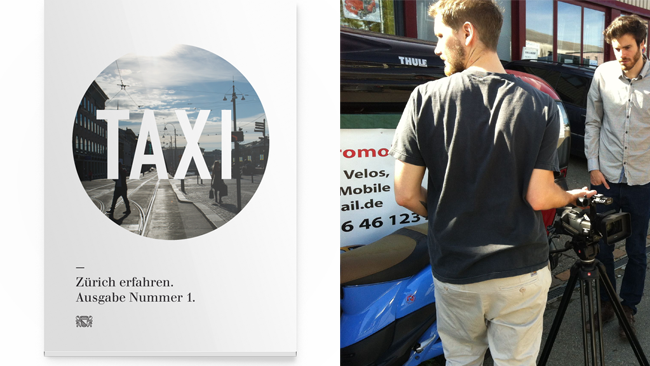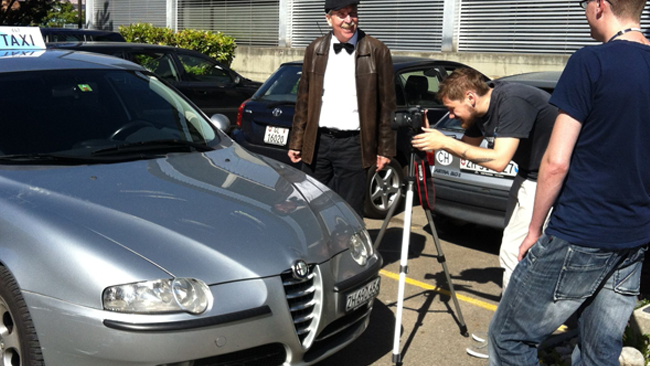Müller, Kappeler, Bliedung
Taxi
Studierende: Patrik Mueller - Matthias Kappeler - Gerhard BliedungFrom the initial goal to make wating in the car more enjoyable for everyone, we shifted to better the overall situation for taxi drivers in Zurich. The methodology included ethnographic video research, online surveys, interviews, field studies and video prototyping. To show our approach for a change, we focused on a participatory magazine suited for drivers as well as passengers.
After initial problems to find a company willing to let three students disturb their workers during their break, we tried to find a more general situation to analyze. The thought of observing the behavior during forced breaks seemed very interesting to us, but again filming seemed impossible and the findings we had after watching slow traffic were too fuzzy to define a problem setting. But then there were the Taxi drivers – seemingly waiting hours only to drive around the block. Our approaches to film interviews with random drivers where not really successful, one driver even ran into his car and shut the doors as we mentioned the camera. So we had to change our approach to collect data. To verify our assumptions about the service, we started an online survey directed at passengers. What was apparent was the discrepancy between the cost and the experience. Yet, as we learned about the hard numbers of a typical workday from surveys sent to taxi offices, we learned that the relatively high price does in no way result in high loans for the drivers. We also started to interview drivers without cameras, which went far better. We learned a lot about their «Subculture», their pride but also their pain and worries about the future. At this point, all the naive ideas we hastily developed as young Designers, e.g. fancy information screens for the passengers, were immediately dropped. We needed to fix the service as a whole, and not in a cosmetical way. As mentioned, the interviews with the drivers showed that the majority are communicative and individual characters. To use this to generate a better image, we developed a participatory magazine, combining informations and stories about the city. As the content is interesting for both drivers and passengers, it can be used during various forms of breaks. Additionally, the editorial team should also be a hub for further training, allowing willing drivers to learn or find other jobs (One problem causing the bad situation is the driver to passenger ratio). Also, social workers should be approachable in personal and job-related issues. Long-term wise the goal should be to make driving a taxi in Zurich a desirable experience and part of the cityscape – a thing taken for granted in other big cities. As we only had four weeks, we mainly focused on the magazine as an example of the campaign. Further steps would have needed more clarification on which institutions are involved – but we are confident that tourism and public transport could both benefit from it.


